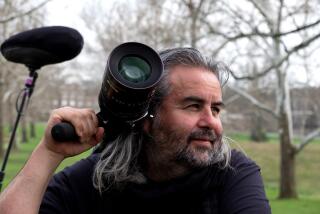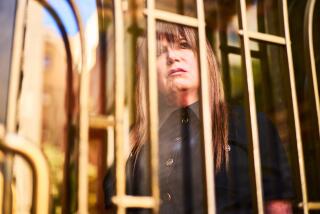Director can call -- and film -- the shots
- Share via
Through his work on such films as “The Celebration,” “Julien Donkey-Boy” and “28 Days Later,” cinematographer Anthony Dod Mantle is at the forefront of exploring and defining the emergent visual aesthetics of digital video.
But with his latest effort, “Dogville,” he now has pushed his work to the outer limits of cinema. Directed by Danish dynamo Lars von Trier and with a cast that includes Nicole Kidman, Paul Bettany, Lauren Bacall, Ben Gazzara and many others, the film takes place entirely on a soundstage lightly dressed to imply, more than embody, the Depression-era small town of the title.
To suit the needs of Von Trier, who for most of the shoot operated his own camera, Mantle and his team of collaborators and technicians devised a specially designed high-definition camera system that allowed the director maximum mobility. The lighting was controlled on the fly, with an intricate system of dimmer controls at the crew’s fingertips just off the soundstage’s main floor.
“Because the idea is that the camera is as alone as it can be with the actors,” explains Mantle, “you have to transmit everything. We rigged this camera so Lars can sit it on his shoulder with umpteen batteries to power the camera and the sound transmitters, while down-converting the images. Sent images are transmitted out to me, so we can see up to a distance of 100 yards without any cables. He’s just moving freely.”
Born and raised in England, Mantle moved to Denmark in the late 1980s to attend film school. He was on the phone from Sweden, where he had just finished the first day of shooting “Manderlay,” the follow-up to “Dogville.”
Shot in much the same style as “Dogville,” the second film of Von Trier’s proposed trilogy will again rely on the camera system that Mantle calls a “crocodile of cables and chaos” and that makes the operator look like “Darth Vader in drag.”
Mantle says Von Trier, who is mostly shooting with just the “Lars cam,” is not concerned with notions of continuity and coverage, but instead prefers to focus on the emotional dynamics of a scene.
Despite his position at the forefront of digital filmmaking, Mantle is wary of being known for any one style.
“After ‘Celebration’ we really did get jet-propelled out into the world,” he says. “I became aware and cautious of the fact that I would be typecast as some kind of front-runner in digital imaging.
“Any serious image maker can tell very quickly what the appropriate format is. As an artist I have to listen to that. In no way do I want to be considered a disciple.”
More to Read
Only good movies
Get the Indie Focus newsletter, Mark Olsen's weekly guide to the world of cinema.
You may occasionally receive promotional content from the Los Angeles Times.









